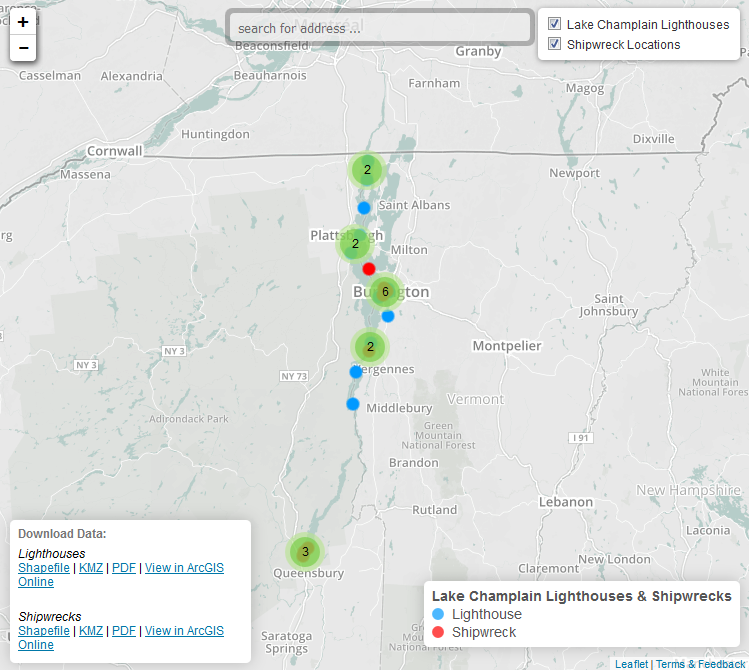Many Lake Champlain lighthouses have been relit in recent years. Private landowners, the Coast Guard, municipalities, historic organizations, and the public have worked together to ensure that the beacons shine brightly again. To date, Windmill Point Lighthouse in Alburg, the Isle La Motte Lighthouse, Cumberland Head Lighthouse in Plattsburgh, the Split Rock Lighthouse, and the Valcour Island Lighthouse have all been reactivated. During the summer of 2003, lighthouse replicas were built and illuminated on Burlington, Vermont’s breakwater.
These lighthouses guided mariners for many years, but not all of those who plied the Lake’s water arrived safely at their destination. Researchers estimate that as many as 300 shipwrecks have occurred during Lake Champlain’s maritime history. As a result, Lake Champlain has perhaps the best preserved collection of submerged cultural heritage resources in North America. Dozens of undiscovered wreck sites and hundreds of other underwater cultural resources still lie undisturbed on the Lake floor. Shipwrecks already found reflect every era of past human activity in the Champlain Basin, from Native American pre-contact, through the repeated military conflicts and the dynamic commercial period of the 19th century.
The Lake’s shipwrecks include the Phoenix, the second steamboat on Lake Champlain, launched in 1815 and burned in 1819; the General Butler, a sailing canal schooner that struck the Burlington Breakwater and sank during a violent storm in 1876; the Horse Ferry, the only known surviving example of this watercraft technology; and the Water Witch, which sunk during a squall in 1866, not far from the mouth of Otter Creek.
The coal barge, A.R Noyes sank in 1884 after breaking loose from a tugboat. The Champlain II, built in 1868 in Burlington to ferry railroad cars, was converted to a steamer in 1874 and wrecked in 1875 when she ran aground north of Westport, New York. Two more canal boats, the O.J.Walker and the Diamond Island Stone Boat are also protected within the Lake Champlain Underwater Historic Preserve established by the States of New York and Vermont.
Among the most exciting and historically significant finds is the 54-foot Revolutionary War gunboat Spitfire. Discovered by the Lake Champlain Maritime Museum in 1997, the boat sits nearly upright in deep water with its mast intact and bow cannon still ready to fire. It was one of eight American gunboats under the command of Brigadier General Benedict Arnold when it sank in the October 1776 Battle of Valcour, which was won by the British forces.
Degradation of water quality, zebra mussels and other nuisance aquatics, improved search technologies and increased accessibility pose difficult challenges in protecting these resources. It is estimated that 50% of the Lake’s historical shipwrecks lie within the reach of zebra mussels, which is around 105 feet deep. It is likely that invasive quagga mussels, which also can degrade wrecks, will eventually arrive in Lake Champlain. This invasive species can live at much greater depths, threatening wrecks that lie too deep to be at risk from zebra mussels.



 Lake Champlain Basin Program
Lake Champlain Basin Program